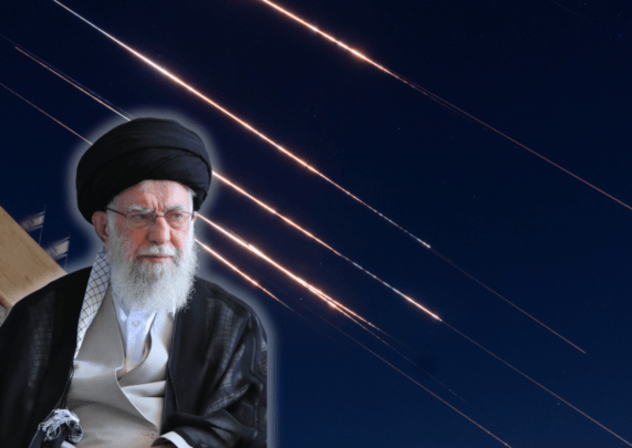Hollowed Out and Unstoppable: How Iran’s Regime Lost Control While Perfecting its Bomb

A cascade of startling admissions from Tehran, damning reports from the world’s top nuclear watchdog, and a blunt assessment from the highest levels of the U.S. military have combined to paint a chilling new portrait of Iran’s nuclear ambitions. The picture emerging is one of a program that is now functionally unstoppable by conventional military means, operated by a regime that has simultaneously proven itself paranoid, strategically compromised, and profoundly vulnerable.
While Tehran continues to insist its nuclear activities are for peaceful purposes, its recent actions—from blinding international inspectors to broadcasting the frailty of its own leadership—have irrevocably shredded that narrative, revealing a state pursuing a bomb with single-minded determination, even as its own internal security collapses.
An Indestructible Threat
The debate over a military option to halt Iran's nuclear progress was effectively ended by a single, stark admission from the United States' highest-ranking military officer. General Dan Caine, the Chairman of the Joint Chiefs of Staff, recently confirmed in public testimony that the U.S. military’s most powerful conventional munitions, so-called ‘bunker-busters,’ would be ineffective against Iran's deeply buried Fordow facility, near Isfahan. U.S. intelligence officials believe this single site houses nearly 60% of Iran’s enriched uranium.
This public acknowledgment from such an authoritative source constitutes a de facto declaration that the core of Iran’s nuclear infrastructure is permanent. It can no longer be surgically removed. Military analysts speaking on background noted that this transforms the Iranian nuclear program from a preventable crisis into a permanent feature of the global security landscape. The conversation, they argue, has shifted from prevention to a far more dangerous game of deterrence against a nuclear-capable Iran.
In response to these developments, Iranian state media has reiterated the country's longstanding position: that its program is exclusively for energy production and therefore poses no threat that would warrant military action. However, this official line is directly contradicted by the International Atomic Energy Agency (IAEA).
The Watchdog Goes Blind
The IAEA, the United Nations’ nuclear watchdog, has been systematically blinded by Tehran. In an unprecedented act of defiance, Iran has officially banned IAEA Director General Rafael Grossi from the country and has begun methodically removing surveillance cameras and monitoring equipment from its key nuclear sites. This move effectively ends any credible international oversight.
Director General Grossi delivered a devastating assessment, stating that not only could Iran reconstitute its full uranium enrichment capabilities “in a matter of months,” but more critically, the agency has lost track of a massive stockpile of fissile material. “We don’t know where” a 900-pound (408kg) cache of highly enriched uranium is, Grossi confirmed. This material is the key ingredient for a nuclear weapon, and its current location is a mystery.
Tehran’s justification for blinding the IAEA has been, by any measure, a catastrophic self-own. Iranian parliamentary officials admitted the decision was made after Israel obtained “sensitive facility data” from the agency’s systems. This statement is a direct admission of two disastrous truths: first, that Iran’s most secret and secure sites suffered a catastrophic intelligence breach, and second, that its response to being compromised was not to fix the security failure, but to eliminate transparency and hide its activities from the world. This action, security experts argue, is not the behavior of a state with a peaceful program, but of one with something critical to hide.
A Funeral for the ‘Peaceful’ Program
Any lingering doubts about the purpose of Iran’s nuclear program were put to rest by the regime itself. In massive, state-sponsored funerals broadcast across the country, the government publicly mourned top nuclear scientists alongside the highest echelons of the Islamic Revolutionary Guard Corps (IRGC). The head of the IRGC and its ballistic missile chief were lionized as martyrs in the same ceremonies as the men who mastered the atom.
These carefully choreographed events provided an irrefutable, visual link between the country’s supposedly civilian nuclear program and the military command structure responsible for its ballistic missiles—the delivery system for a nuclear warhead. For years, Tehran has insisted the two were separate. In a single, widely publicized act of mourning, the regime made it clear to its own people and the world that the scientists, the generals, and the missiles are all part of the same project.
The Brittle Regime
Even as the invincibility of its nuclear program has become clear, the weakness of the regime has been put on humiliating public display. In a bizarre and telling piece of state television, Ali Shamkhani, a close and powerful aide to the Supreme Leader, was interviewed to prove he had survived a recent attack. Visibly injured, using a walking stick, and speaking with the help of a breathing aid, Shamkhani confirmed that his home had been destroyed in a precision strike. The broadcast, intended to project resilience, instead provided undeniable proof that the regime cannot protect its own inner circle from its enemies.
This external vulnerability is mirrored by an intense internal paranoia. The regime has kicked off what state media is proudly calling a “season of traitor-killing.” A wave of swift, brutal executions of Iranian citizens accused of spying for Israel is underway. Rather than projecting strength, this domestic crackdown reveals a regime terrified of internal enemies, seeing spies in every shadow. Regional analysts suggest that this lashing out at its own populace is a classic sign of a brittle power structure, one that is using a foreign conflict as a pretext to terrorize and silence any and all dissent as it feels its own grip on power slipping.